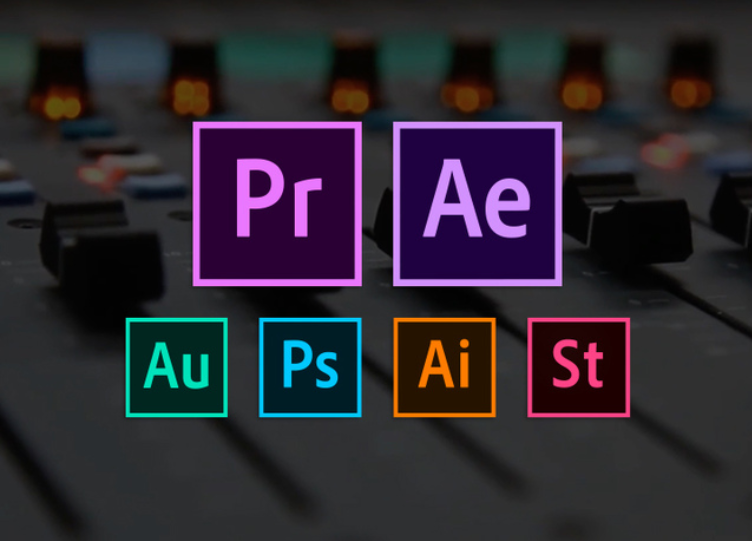马特戈 : 软件 计算机发烧友的通用监视器控制器和可视化插件。 介绍 MAATgo 适用于所有主要的插件格式,包括 VST 2、VST 3 和 AAX 的 macOS 和 Windows 以及 macOS 的音频单元,提供完整的"预放大器"通道路由,以及真实复制模拟示波器体验的软件日光计。 如果音乐是你的职业,你的激情或两者兼而有之,MAATgo是为你。MAATgo 是明确为每一个谁听 HRA (高分辨率音频) 文件和流在他们的计算机上。在消费者 hi-fi 的黄金时代,一些预放大器不仅有一个"平衡"旋钮,而且具有立体声/单声道混合控制装置,甚至还有一个示波器,可即时显示左右通道之间的振幅、频率和相位关系。马兰茨、松下、先锋和SAE有时在接收器中包括示波器,而Apt公司的传奇和开创性的霍尔曼预放大器有一系列通道重新路由开关和连续立体声/单声道混合控制。这不是"功能蠕变",不必要的功能只是为了填写一个列表。Apt 的重新修补和混合控制具有非常有用的用途。 回到模拟时代,大多数高保真爱好者都有"分离"。这些都是单独的立体声组件,如调谐器或预放大器,每个都服务于一个目的。随着"计算机音频"的出现,该钻机可以简化为个人计算机,为 DAC 或数字-模拟转换器提供馈送。反过来,DAC 提供电源放大器或供电扬声器。虽然这种极简主义设置消除了预置器,但它只有音量控制,并且大多数玩家应用程序除了音量之外缺乏典型的控件。输入 MAATgo,这是一个高级选择的预选值。当任何控件被禁用时,它们完全"断路",不会影响音质。启用任何控制时,DSP 使用 64 位双精度浮点数学,以确保最大保真度。此外,MAATgo 将以高达 384 kHz 的速度运行,与一般可用的最高保真无损 PCM 文件和流兼容。 特征 MAATgo 结合了各种通道转向和混合控制与平衡调节和日光计。一些立体声图像和路由控件包括总和或 L+R 模式、差异或 L-R 模式、交换模式(交换左右位置)以及左、右或两者的极性反转。 我们都需要一点乐趣,L-R(左减右)模式可用于"卡拉OK",因为许多流行歌曲大多有单声道。由于L-R模式删除任何单一内容,人声通常显著减少或完全消除。这让你一起唱,伴随着节奏的轨道。另一个有价值的功能是极性反转模式,它允许您检查信号链的完整性,而仅左侧和右侧的控件可为您的立体声场提供更细致入微的视图。 查看您听到的内容 goniometer 或"相位范围"可快速传达全球趋势和问题,让您测量频率响应和相位变化,并内置额外的视觉出相警告。此外,可选的自动增高功能可确保您看到具有广泛输入振幅的可理解显示屏。 可视化长期以来一直是在计算机上欣赏音乐的一部分,MAATgo的选择很容易被喜欢。与占用设备机架空间的示波器不同,MAATgo 明显缺少旋钮。控制增益,焦点,"磷"的颜色,绘画风格和持久性都存在于偏好中,一切都可以保存为个人预设。 流式传输 MAATgo 的另一个不错的功能是包括的独立或"原生"版本,原生,因为它在没有 DAW 或播放器应用程序帮助的情况下自行运行。独立版本让您真正萨维极客在那里使用 MAATgo 作为流 - 通过处理器,就像组件分离在高保真硬件世界。要独立使用 MAATgo,您通常需要一个"虚拟音频设备",一个音频驱动程序,提供您的操作系统可用于修补的软件"设备"。对于视窗,我们推荐 VB-Audio 的 HI-FI 电缆。对于 macOS,我们推荐存在音频的黑孔。两者都是免费的。 这一切加起来是多才多艺的 更好的信息意味着更好的享受。。。无论您是在排除问题、建立新系统,还是只是探索音乐的细微差别,MAATgo 都让问题变得更容易。凭借其所有功能,跟踪嘈杂的电缆或组件、在新扬声器或耳机中燃烧、设置新钻机,甚至找出重新发行的声音与上一代产品有何不同,速度更快、更愉快。所有这一切和更多,只需点击一个按钮。 MAATgo :: Software A universal monitor controller and visualization plug-in for computer audiophiles. Introduction Available for all major plug-in formats, including VST 2, VST 3 and AAX for macOS and Windows plus Audio Units for macOS, MAATgo delivers complete “preamp” channel routing, plus a software goniometer that authentically replicates an analog oscilloscope experience. If music is your profession, your passion or both, MAATgo is for you. MAATgo is explicitly built for everyone who listens to HRA (High Resolution Audio) files and streams on their computer. In the Golden Age of consumer hi–fi, some preamplifiers had not only a “balance” knob, but stereo/mono blend controls and even an oscilloscope to instantaneously display amplitude, frequency and the phase relationship between left and right channels. Marantz, Panasonic, Pioneer and SAE sometimes included an oscilloscope in their receivers, while the Apt Corporation’s legendary and groundbreaking Holman Preamplifier had a range of channel re–routing switches and a continuous stereo/mono blend control. This was not “feature creep,” needless features just to fill out a list. The Apt’s re–patching and intermix controls served a very useful purpose. Back in the Analog Era, most hi–fi enthusiasts had “separates.” These were individual stereo components, like a tuner or preamp, each serving one purpose. With the advent of “computer audio,” that rig can been reduced to a personal computer feeding a DAC or digital–to–analog converter. In turn, the DAC feeds a power amplifier or powered loudspeakers. While this minimalist setup eliminates a preamplifier, it has only a volume control and most player applications lack typical controls other than volume. Enter MAATgo, a preamp’s worth of advanced choices. When any of the controls are disabled, they are completely “out of circuit” and do not affect the sound quality. When any control is enabled, it’s DSP uses 64 bit, double precision floating point math to ensure maximum fidelity. Also, MAATgo will operate at up to 384 kHz, compatible with the highest fidelity lossless PCM files and streams generally available. Features MAATgo combines a variety of channel steering and blending controls with a balance adjustment and goniometer. Some of the stereo image and routing controls include a sum or L+R mode, a difference or L-R mode, a swap mode that interchanges the position of left and right, and polarity inversion for left, right or both. We all need a bit of fun, and the L-R (Left Minus Right) mode can be used for “karaoke” since many popular songs have mostly monaural vocals. Since L-R mode removes any mono content, vocals are usually reduced significantly or eliminated entirely. This let’s you sing along, accompanied by the rhythm track. Another valuable feature, the polarity inversion modes let you check signal chain integrity, while the left–only and right–only controls offer a more nuanced view into your stereo soundfield. See What You’re Hearing The goniometer or “phase scope” quickly conveys global trends and troubles, letting you gauge frequency response and phase shift, with an additional visual out–of–phase warning built in. Plus, an optional autogain feature insures that you’ll see an understandable display with a wide range of input amplitudes. Visualization has long been part of enjoying music on a computer, and MAATgo’s options are easy to like. Unlike an oscilloscope which takes up room in your equipment rack, MAATgo has a notable absence of knobs. Control over gain, focus, “phosphor” color, drawing style and persistence are all there in the preferences, and everything can be saved as a personal preset. Stream Through Another nice feature with MAATgo is the standalone or “native” version that’s included, native in that it runs on its own without the help of a DAW or player app. The standalone version let’s you really saavy geeks out there use MAATgo as a stream–through processor, just like component separates in the hi–fi hardware world. To use MAATgo standalone, you usually need a “virtual audio device,” an audio driver that provides a software “device” your operating system can use for patching. For Windows, we recommend VB-Audio’s HI-FI Cable. For macOS, we recommend Existential Audio’s BlackHole. Both are free. It All Adds Up To Versatile Better informed means better enjoyment…Whether you’re troubleshooting an issue, setting up a new system, or just exploring the nuances of your music, MAATgo makes it easier. With all of its functionality, it’s faster and more pleasant to track down a noisy cable or component, burn in new speakers or headphones, set up a new rig, or even figure out how a reissue sounds different from the previous generation. All that and more with just a button click. |
 VJ天堂 Resolume Arena 7 v7.2.1 WIN x64
VJ天堂 Resolume Arena 7 v7.2.1 WIN x64 视频编辑软件 Adobe Premiere Pro CC 2019
视频编辑软件 Adobe Premiere Pro CC 2019  经典视频编辑软件 MAGIX VEGAS Pro 17.0.0.
经典视频编辑软件 MAGIX VEGAS Pro 17.0.0. 经典视频编辑软件 MAGIX VEGAS Pro v18.0.0
经典视频编辑软件 MAGIX VEGAS Pro v18.0.0 动态图形和视觉效果软件 Adobe After Effec
动态图形和视觉效果软件 Adobe After Effec VJ天堂 Resolume Arena 6.0.1 WIN.OSX x64
VJ天堂 Resolume Arena 6.0.1 WIN.OSX x64 好莱坞新人导演必备豪华大礼包
好莱坞新人导演必备豪华大礼包 专业电影编辑 MAGIX Movie Edit Pro 2019 P
专业电影编辑 MAGIX Movie Edit Pro 2019 P 经典办公软件 Microsoft Office Standard 2
经典办公软件 Microsoft Office Standard 2 视频编辑录屏软件TechSmith Camtasia Studi
视频编辑录屏软件TechSmith Camtasia Studi 经典视频编辑软件 MAGIX VEGAS Pro v16.0.0
经典视频编辑软件 MAGIX VEGAS Pro v16.0.0 屏幕录像 Camtasia 3 for Mac V3.0.4
屏幕录像 Camtasia 3 for Mac V3.0.4